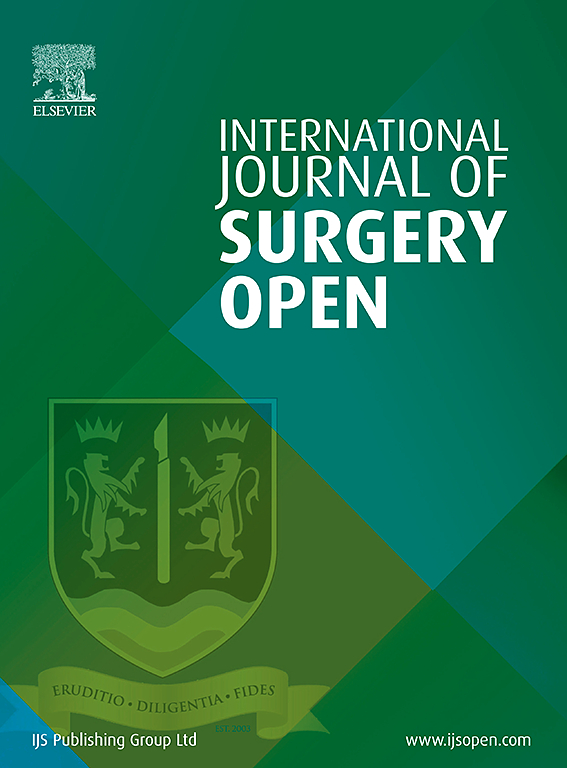预测非转移性肌肉浸润性膀胱癌淋巴结转移的nomogram:一项基于seer的研究。
IF 12.5
2区 医学
Q1 SURGERY
引用次数: 0
摘要
本文章由计算机程序翻译,如有差异,请以英文原文为准。
A nomogram for predicting lymph node metastases in nonmetastatic muscle-invasive bladder cancer: a SEER-based investigation.
This study aimed to develop a predictive nomogram model and a risk classification system to predict the likelihood of lymph node metastases for non-metastatic muscle-invasive bladder cancer (MIBC) patients using a large population-based cancer database. According to our nomogram, larger tumor size, overlapping lesions, young age, female, poorly differentiated histological grade, and advanced T stage, are independent risk factors for pN+. A precise nomogram model predicting pN+ probability for MIBC patients can support patient risk stratification and outcome estimation, and eventually guide clinical decision-making.
求助全文
通过发布文献求助,成功后即可免费获取论文全文。
去求助
来源期刊

International journal of surgery
SURGERY-
CiteScore
17.70
自引率
3.30%
发文量
0
审稿时长
6-12 weeks
期刊介绍:
The International Journal of Surgery (IJS) has a broad scope, encompassing all surgical specialties. Its primary objective is to facilitate the exchange of crucial ideas and lines of thought between and across these specialties.By doing so, the journal aims to counter the growing trend of increasing sub-specialization, which can result in "tunnel-vision" and the isolation of significant surgical advancements within specific specialties.
 求助内容:
求助内容: 应助结果提醒方式:
应助结果提醒方式:


